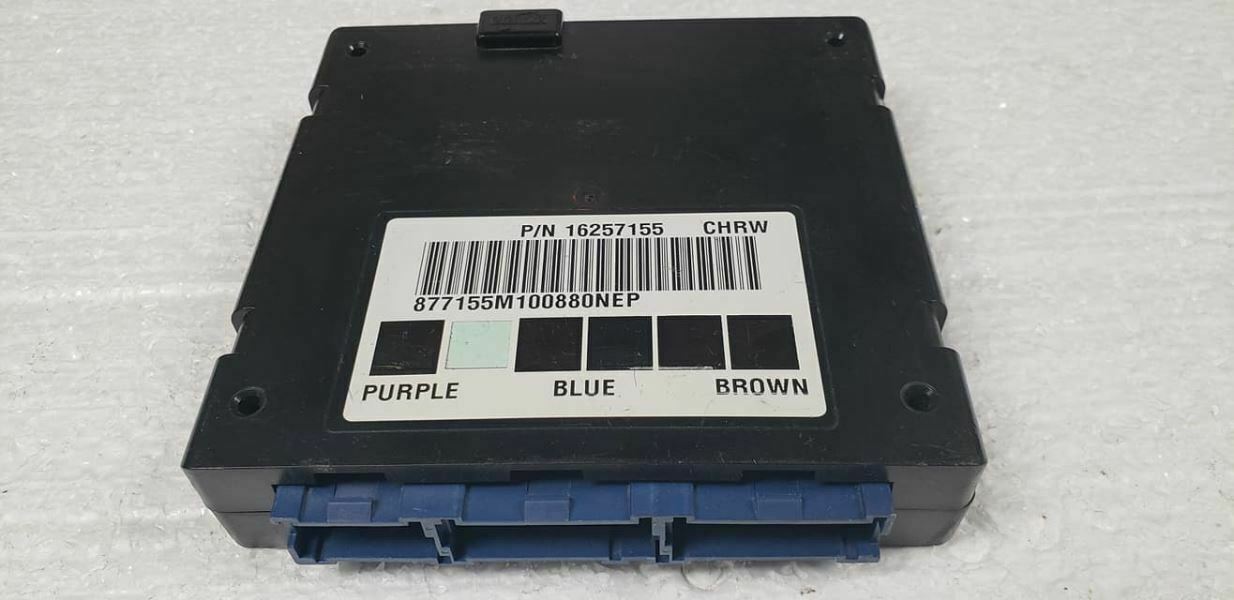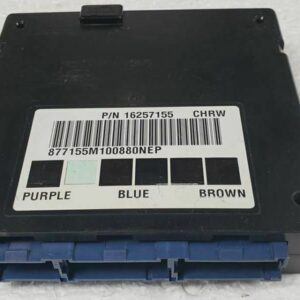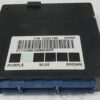Restore Your Truck’s Electrical System with a Plug-and-Play Solution
Are you battling frustrating electrical gremlins in your 2000 GM truck or SUV? Flickering lights, unresponsive power windows, or a security system that leaves you stranded are common symptoms of a failing Body Control Module (BCM). The BCM is the central command center for your vehicle’s body electronics, and when it fails, it can cause a cascade of confusing issues. This isn’t just an inconvenience; it can be a serious safety concern. We offer a dependable, pre-programmed Body Control Module that gets you back on the road without the exorbitant costs and scheduling headaches of a dealership visit.
This isn’t just a part in a box. We take your vehicle’s VIN and flash this module with the latest, most stable software directly from GM. This means it arrives at your door ready for installation, tailored specifically to your truck’s options. By providing a properly programmed module, we eliminate the most difficult step of the repair, making this a job that a confident DIYer or any professional mechanic can complete efficiently. Take control of your repair and restore the reliable function you expect from your vehicle with this direct-fit 2000 Yukon XL BCM.
From the Diagnostic Bay
A customer brought in his 2000 Suburban 1500 last month with a classic case of BCM failure. The radio would turn on and off by itself, the power locks worked intermittently, and the security light was always on, sometimes preventing the truck from starting. He had already replaced the battery and checked fuses, getting nowhere. After a quick scan, we confirmed communication faults with the BCM. Instead of a lengthy and expensive dealer process, we installed one of our pre-programmed modules. The entire physical swap took less than 30 minutes. After performing the quick ‘Setup SDM Primary Key’ procedure, all the strange electrical issues were gone. The customer drove away with a reliable truck and saved hundreds of dollars compared to the dealership quote.
Common Signs of a Failing BCM
If your vehicle is experiencing these issues, a faulty BCM is the most likely culprit. In my 20+ years of experience, these are the symptoms I see most often:
- ✔ Erratic power windows, door locks, or mirrors.
- ✔ Interior or exterior lights that stay on, flicker, or don’t work at all.
- ✔ The security or anti-theft light is illuminated, and the engine may not start.
- ✔ Horn honking unexpectedly or not working when pressed.
- ✔ Inaccurate or dead gauges on the instrument cluster.
- ✔ Communication error codes with a professional scan tool.
Your Straightforward BCM Installation Guide
Replacing the BCM is a manageable job for most DIYers. The module is typically located under the driver’s side of the dashboard.
- Safety First: Disconnect the negative terminal from your vehicle’s battery to prevent any electrical shorts.
- Locate the BCM: On these models, it’s found under the driver’s side dash, often to the left of the steering column. You may need to remove a lower dash panel for access.
- Disconnect and Remove: Carefully unplug the electrical connectors. They have locking tabs that need to be depressed. Once disconnected, unbolt or unclip the old BCM from its mounting bracket.
- Install the New Module: Mount your new, pre-programmed BCM in the same location and securely plug in all the electrical connectors. You should hear a ‘click’ as they lock into place.
- Reconnect Power: Reattach the negative battery terminal.
- Perform Final Syncing: Follow the critical post-installation steps below. This is a crucial step for safety system functionality.
Critical Post-Installation Requirements
This is not optional. To ensure full functionality and safety, these procedures are required after installing your new 2000 Yukon XL BCM:
- Airbag System Reset: The ‘Setup SDM Primary Key in BCM’ procedure must be performed with a bi-directional scan tool. This step is essential to turn off the airbag warning light and ensure the system is operational. Most professional repair shops can perform this service.
- Brake Pedal Position Sensor (BPPS) Relearn: Some vehicles may require the BPPS to be recalibrated. This ensures the brake lights and anti-lock brake system function correctly.
Verified Fitment For These GM Models
This module is a direct replacement for part numbers 16257155, 15136876, and 09377486. It is guaranteed to fit the following vehicles with the corresponding options:
- 2000 Chevrolet Suburban 1500 (Body Control Module; LH dash, ID 9377486)
- 2000 Chevrolet Suburban 2500 (Body Control Module; LH dash, ID 9377486)
- 2000 Chevrolet Tahoe (Body Control Module; LH dash, ID 9377486)
- 2000 GMC Yukon (exc. Denali; Body Control Module; LH dash, ID 9377486)
- 2000 GMC Yukon XL 1500 (Body Control Module; LH dash, ID 9377486)
- 2000 GMC Yukon XL 2500 (Body Control Module; LH dash, ID 9377486)
Frequently Asked Questions
What exactly does a Body Control Module do?
The BCM acts as the brain for your vehicle’s comfort and convenience electronics. It controls non-engine related functions like power windows, locks, interior lights, the security system, wipers, and the horn.
Do I need to get this module programmed by a dealer?
No! That’s the primary benefit of our service. We program the BCM to your vehicle’s specific VIN before we ship it to you. This saves you time and the high cost of dealer programming.
How difficult is the installation?
The physical replacement is straightforward for someone with basic mechanical skills. It involves removing a dash panel and swapping the module. The most critical part is ensuring the post-installation procedures (like the airbag key setup) are performed correctly with a proper scan tool.
What happens if I don’t do the post-installation procedures?
You will likely have an airbag warning light on your dash, and more importantly, the airbag system may not function correctly in an accident. The brake pedal sensor relearn is also vital for proper brake light and ABS operation. These steps are essential for safety.
How do I provide my VIN number for programming?
After you complete your purchase, you will need to send us your 17-digit Vehicle Identification Number (VIN). We cannot program and ship your module without it. You can typically find your VIN on the driver’s side dashboard (visible through the windshield) or on your vehicle’s registration.



